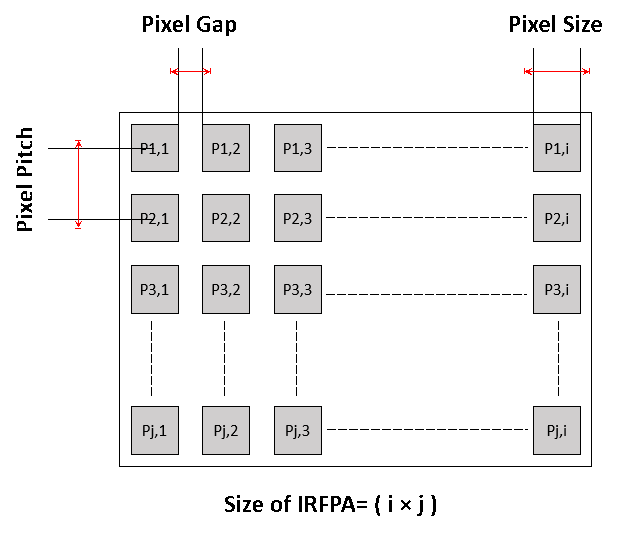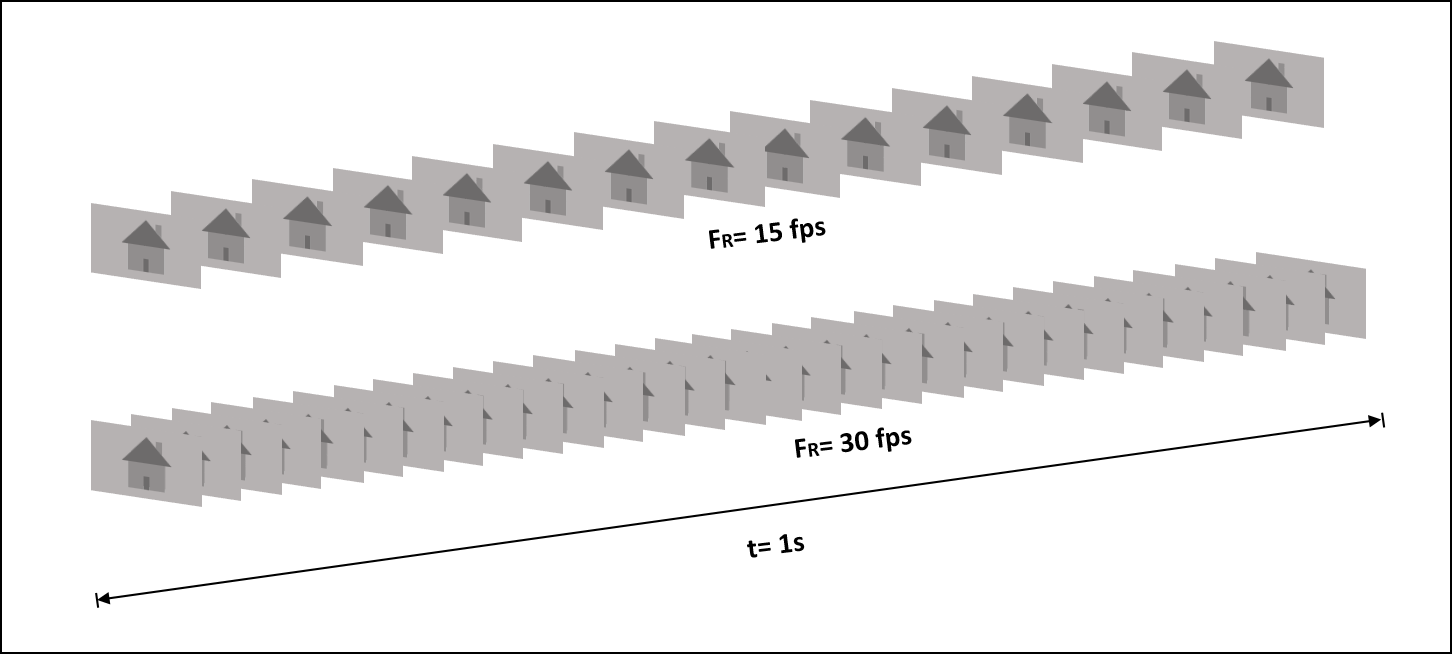Today’s thermal imaging devices offer a lot more features and have become crucial equipment for armed forces for surveillance and warfare. A thermal imaging device is accomplished with a camera that converts infrared radiation (IR) into a visual image that depicts temperature variations across an object or scene. In continuation of our previous blog on the noise equivalent temperature difference (NETD) of a thermal imaging device, here we will highlight important parameters as resolution, pixel pitch, and frame rate of thermal imaging devices which are commonly used to define the level of advancement in any imaging device. Particularly in uncooled infrared cameras, micro-bolometer has been widely adopted as the IR detector. The following terms wherein used to specify the characteristics of pixels and their arrays are as follows;
Resolution: In thermal imaging devices, a small size focal plane array (FPA) of light-sensitive or heat-sensitive micron size detectors is used to convert the real-time optical or thermal scene into its equivalent electrical signal. The term “Resolution” of an imaging system defines the number of detectors (pixels) inside the FPA, a rectangular matrix of pixels. The systematic arrangement of pixels inside an FPA is shown in figure1.

Figure 1. Systematic illustration of pixel arraying in an imaging focal plane array
In thermal imaging FPAs, the resolution is expressed as the multiplication form of its lines and columns (horizontal and vertical arrangement of pixels) of the FPA. For example, an IRFPA of 320×240 means the FPA contains 320 columns of 240 pixels or lines. Similarly, 640×480 FPA means an array of 680 columns and 480 lines. The widely accepted uncooled IRFPA format is 4:3 (width to height or columns to lines ratio) like; 160×120, 320×240, 640×480, 1024×768, 1280×1024, etc. Typically, higher resolution produces more detailed images and therefore is always preferred as it results in a wider field of view and brings more clarity to the soldier while identifying and detecting the target. However, the resolution is sometimes restricted by the responsively of the detector itself, fabrication feasibility, and the end-use application.
Pixel pitch: Pixels inside an FPA are often characterized by their “pixel pitch” since this is the most informative structural characteristic. The Pitch of a pixel in imaging FPA is the distance between the centers or extremities of two adjacent pixels. Widely used micro-bolometer FPAs for thermal imaging and temperature monitoring are 25, 17, and 12 µm pixel pitch. In common practice, smaller size pixels can provide higher device density, primarily required for higher resolution imaging requirements, and also leads to the smaller size of FPAs, larger f/number optics, and therefore provide more clear images and also helps in making more compact devices. However, the fabrication of such FPAs is an extremely challenging process and requires state-of-the-art CMOS and MEMS processing facilities and professional expertise. We at MKU use the latest in the market 12 µm thermal imaging FPAs in our thermal scopes that promise highly robust, compact, and lightweight devices to our customers.
Frame rate: The frame rate (FR) is one of the important features of any thermal imaging device used to evaluate the output video quality. From the viewer’s point of view, it is the number of imaging frames displayed on the screen in the time of one second. This is measured in Hertz (Hz), where 1Hz is equal to 1 frame per second. Frame rate, therefore, is the speed at which the camera updates its output information being displayed on the device screen. A systematic depiction of the frame rate of a thermal camera is shown in figure 2.

Figure 2. Basic illustration of frame rate as the number of images taken out by the camera in 1 second
A 15 Hz camera does this 15 times per second, and a 30 Hz camera 30 times per second. In still or slow dynamic scenes, the low frame rate devices perform well. Whereas, in faster scene dynamics, higher frame rate cameras in the devices are required to overcome the visible effect of lagging images produced by the device than the actual situation in real-time. The video output of an imaging system of a lower frame rate would produce blurry and lagging images of the scene outside. On another hand, the imaging system with a higher frame rate like 30 fps, or 60 fps provides output images with better clarity and lower lagging compared to the actual scenario. The higher the frame rate, the smoother will be the rendering of dynamic scenes. However, the frame rate of an uncooled thermal imager is restricted by the size and the constant time of the detector. MKU thermal imaging systems use advanced infrared imaging technology to bring an efficient image while establishing the target with pinpoint accuracy over longer distances at night.
To conclude, apart from a clearer image soldiers also requires more functional benefits from their surveillance devices. IR imaging helps to detect the targets in dark pitch, hazy or snowy, etc conditions. MKU’s advanced and lightweight Thermal weapon sights help the armed forces to identify their target much more easily in comparison to other devices available in the same category.